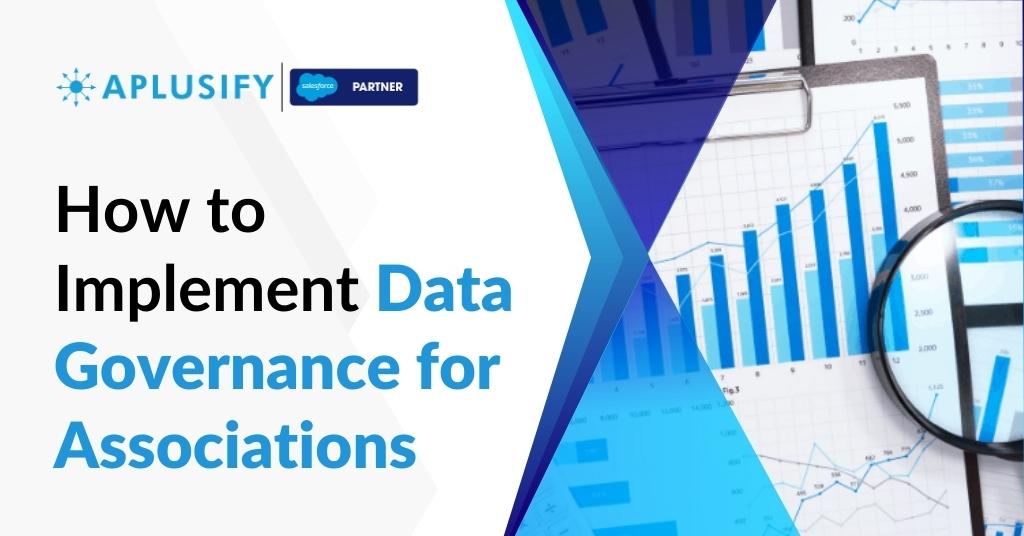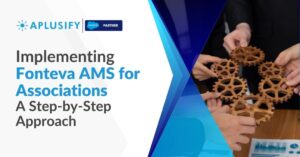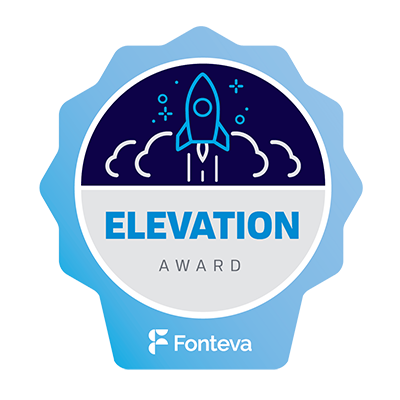
Data governance is a critical component of any successful association, and it starts with having the right tools in place. An Association Management System (AMS) such as Salesforce®, Fonteva, or Nimble AMS provides the foundation for data governance. This allows associations to manage their data and make decisions based on business intelligence.
With a data strategy in place, associations can ensure their data is secure, up-to-date, and properly managed. Data governance is essential for associations to make informed decisions and ensure their data is being used and managed in the best way possible. Associations investing in a data governance strategy can ensure their data is secure, efficient, and accurate.
Table of Contents
ToggleWhat is Data Governance?

Data Governance is a critical element of any association’s data management strategy. It is a framework that provides structure and oversight to the collection, storage, and usage of data within an organization. A successful data governance program should ensure that data is accurate, consistent, and secure. The data strategy should also ensure that data is used in a way that is compliant with regulations, such as GDPR and CCPA.
Data Governance can be achieved through a variety of methods, including the use of an Association Management System (AMS).
These systems collect and store data within a secure environment and is accessible to authorized users. AMS can also be used to create data strategies that can help ensure that data is used responsibly and in compliance with regulations.
Additionally, Business Intelligence tools can be used to analyze data and provide insights into how data is being used and how it can be optimized for better results.
Understanding the Data Governance Lifecycle
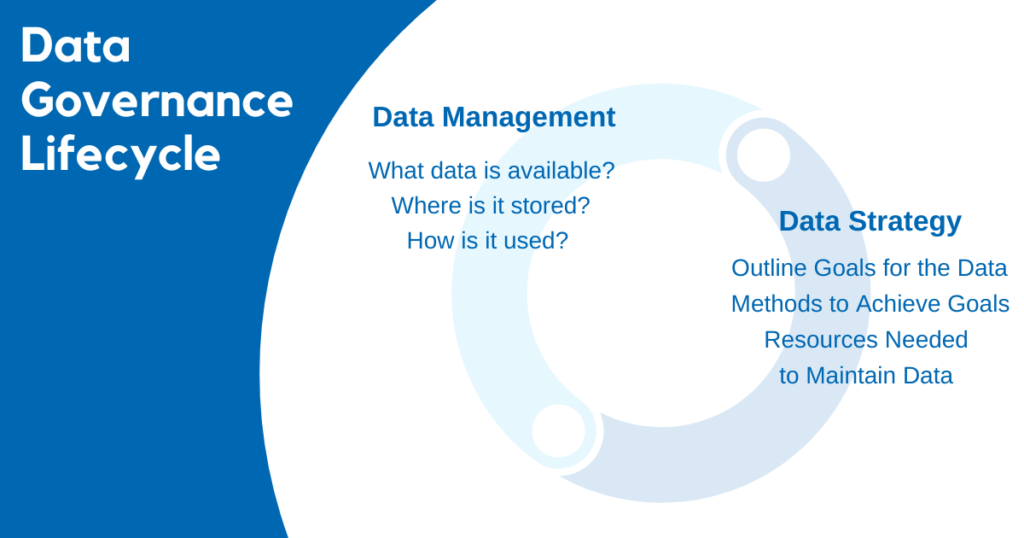
Data governance is essential for associations to ensure that their data is secure, accurate, and up-to-date. This is especially true when it comes to an Association Management System (AMS) like Salesforce, Fonteva, or Nimble AMS. Understanding the data governance lifecycle is key to developing a successful data strategy.
The data governance lifecycle begins with data management. This involves understanding what data is available, where it is stored, and how it is used. This helps to ensure the accuracy and security of the data.
Once data management is in place, the next step is to develop a data strategy. Outline the goals for the data, the methods for achieving those goals, and the resources needed to maintain the data.
Manage the data is managed in accordance with the strategy.
- monitor the data
- ensure data accuracy
- provide feedback on any changes that need to be made.
Associations who understand the data governance lifecycle can ensure their data is secure, accurate, and up-to-date. This will help them to better utilize their AMS, and ensure they are making the most of their data. With the right data governance practices in place, associations can be confident that their data is working for them.
Assessing Your Association’s Current Data Governance Strategy

Data governance is an essential component of any association’s data strategy. It is the practice of creating and enforcing policies and procedures for collecting, managing, and using data. It is important to understand the different types of data governance software available.
AMS allows associations to store and manage member data, as well as provide business intelligence and analytics. An AMS can help create policies and procedures, such as setting up data access permissions and ensuring data accuracy.
This involves setting up processes and procedures for collecting, managing, and sharing data. It also involves setting up data security protocols and ensuring data integrity.
Taking the time to assess your association’s current data governance strategy. As assessment ensures that your association is compliant with data privacy regulations and that your members’ data is secure.
Data Governance Strategies for Associations
An organization’s data is vital, and this includes implementing data governance strategies for associations. Data governance refers to the process of overseeing data within an organization. This includes the policies, procedures, and processes that guide the use, storage, and security of the data.
Use an Association Management System (AMS) such as Salesforce, Fonteva, or Nimble AMS to manage and store the association’s data. It includes the use of Business Intelligence (BI) tools to analyze and report on the data. With a proper data governance strategy in place, associations can ensure that their data is secure, accurate, and up-to-date.
Outline the data management process – how is data collected, stored, and used. This should include policies and procedures for data access, security, and privacy.
Established a data strategy governance team. This team oversees the data management process and provides guidance to ensure data accuracy and consistency.
With a solid strategy in place, associations can be confident that their data is secure and accurate. enabling them to make informed decisions and achieve their goals.
Resource: Why your association needs to adopt a data governance policy (Nimble AMS)
1. Picking the Right AMS for Your Data Governance Strategy

When it comes to data governance for associations, picking the right Association Management System (AMS) is a critical decision. An AMS serves as the foundation for your association’s data strategy and data governance. It’s important to select the best one for your organization.
Popular AMS systems include Salesforce, Fonteva, and Nimble AMS. Each of these offers different features and capabilities for data management, business intelligence, and data strategy governance.
Ensure that your AMS suits to your organization’s data governance strategy.
Evaluate each system’s features and capabilities to determine which one is best for your association’s data management needs.
Consider the cost of each system, the user-friendliness of the interface, and the availability of customer service and technical support.
With the right AMS in place, your association can maximize its data governance strategy.
2. Integrating Your Data Governance Strategy with Your AMS
One of the most important decisions is how to integrate your data governance strategy with your Association Management System (AMS).
- Create policies and procedures that store, access, and manage in a secure and compliant manner
- Consider how to ensure data security and compliance, as well as how to use data to make informed decisions.
- Integration helps ensure that your data is properly managed and secure, while also providing access to business intelligence and data management tools.
Tips for a Successful Data Governance Strategy with Your AMS
With an effective strategy in place, associations can ensure that their data is secure, accurate, and up-to-date. It’s also important to ensure that their staff and members are able to access the data they need.
Each of system offers different features and capabilities. Choose the system that best fits your organization’s needs.
Once you have chosen an AMS, it’s time to start developing a data governance strategy. This strategy should include data management, data security, and business intelligence. It should also include a data strategy governance framework, which will ensure that the data governance strategy is followed and maintained.
Associations who implement a successful data governance strategy with your AMS can ensure that their data is secure, accurate, and up-to-date. This will enable staff and members to access the data they need quickly and easily and will help the association to make better decisions and run more efficiently.
Resources:
- Best Practices For Data Governance & Stewardship In Salesforce (Salesforce)
- 6 Tips to Improve Your Association’s Management with Data (Fonteva)
Conclusion
Ensure that your data is secure and your association is well-managed. Understand the data governance lifecycle. Assess your association’s current data governance strategy. Integrate your data strategy with your AMS.
Select the best AMS for your data governance strategy. You can maximize the value of your data and improve the efficiency of your data management. Use business intelligence to gain insights into your data and make informed decisions.
Finally, follow best practices for a successful data governance strategy. With a strategic data governance strategy, associations can unlock the power of their data and use it to drive their mission forward.
So what are you waiting for?
Take Control of Your Association’s Data Today with Aplusify!
Don’t miss out on this opportunity to transform your data. Be proactive, be smart, and start working with Aplusify now.
Click the button below to get started. Remember, it’s not just about managing data, it’s about taking control and driving your association forward. So make the right choice and choose Aplusify today.
Frequently Asked Questions
Q: What is data governance?
A: Data governance is a set of processes, principles, and policies that organizations use to ensure the quality, accuracy, and security of their data. It is a comprehensive approach to managing data that covers all aspects of data management, from data collection and storage to data analysis and reporting.
Q: What is an Association Management System (AMS)?
A: An Association Management System (AMS) is a software platform designed to help associations manage their operations, including membership, events, finances, and more. It is often used to automate and streamline processes and help associations keep track of their data.
Q: What are some of the data governance strategies used by associations?
A: Associations can use a variety of data governance strategies, such as data classification, data quality management, data security, data privacy, and data auditing. These strategies help ensure that the data collected and stored by associations is accurate, secure, and compliant with applicable laws and regulations.
Q: What should associations consider when selecting an AMS for their data governance strategy?
A: When selecting an AMS for their data governance strategy, associations should look for a system that is secure, compliant, and offers features such as data classification, data quality management, data security, data privacy, and data auditing. Additionally, they should consider the scalability of the system to ensure it can meet their current and future data governance needs.
Q: How can associations integrate their data governance strategy with their AMS?
A: Associations leverage AMS features to help them manage their data. For example, they can use the AMS to classify their data, monitor data quality, ensure data security and privacy, and audit their data. Additionally, they can use the AMS to generate reports and insights to help them make informed decisions about their data.
Q: What tips should associations keep in mind for a successful data governance strategy?
A: Associations should ensure that their data governance strategy is tailored to their specific needs and goals. They should also ensure that their data governance strategy is properly documented and communicated to all stakeholders. Additionally, they should review their data governance strategy regularly to ensure it is up-to-date and effective.

